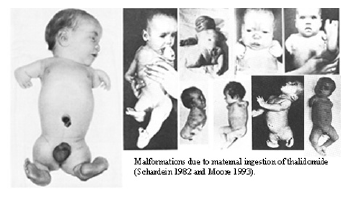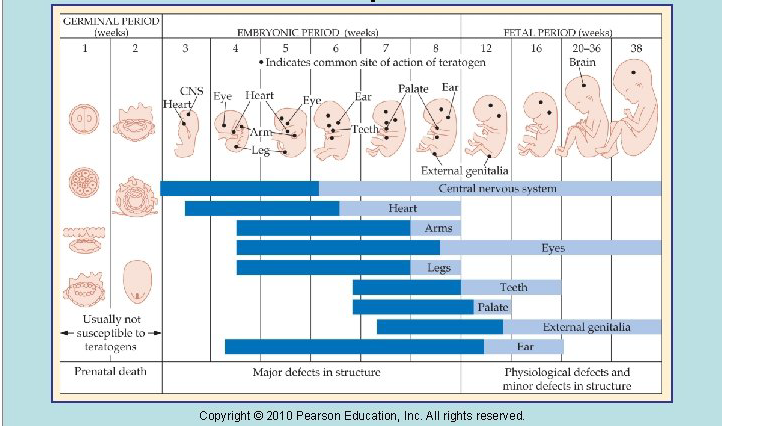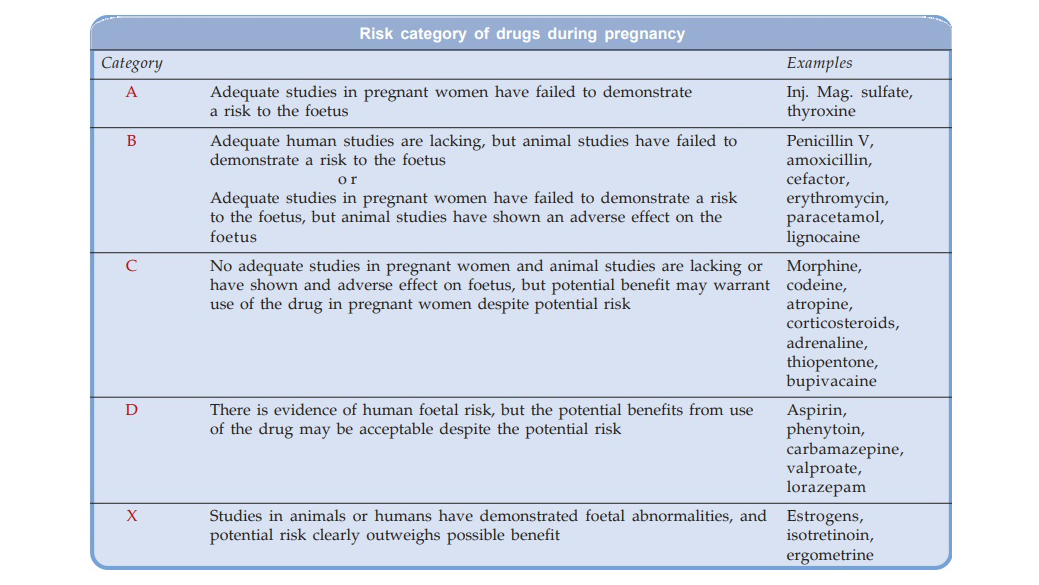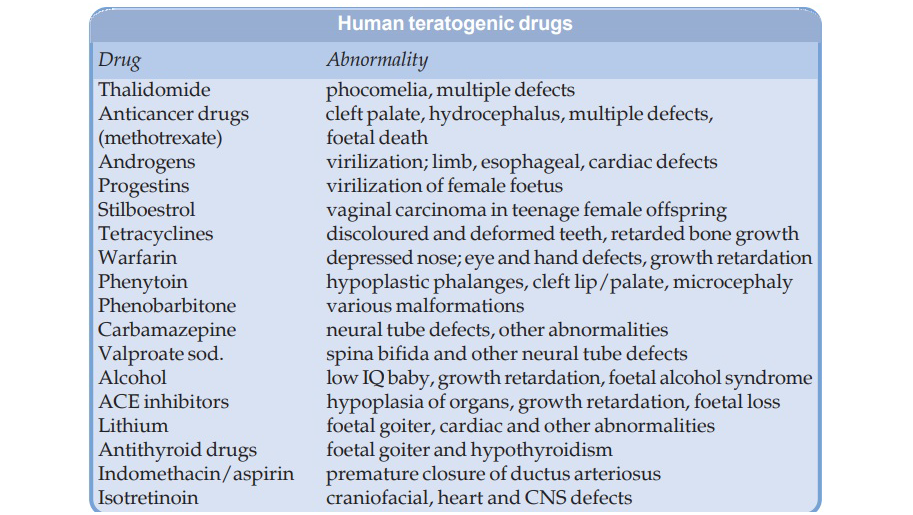What You Will Learn
After reading this note, you should be able to...
- This content is not available yet.
Progesterone inhibit contraction of smooth muscles in various regions in the GIT resulting in reduced gastric motility and reduced drug availability after oral use.
Skin: vasodilation, increased tissue perfusion and increased absorption of IM drugs.
Increased total body water: hemodilution, large space for distribution of water soluble drugs, free concentration of drugs bound to albumin.
Increased hepatic metabolism (not blood flow): the dose of drugs metabolized in the liver such as phenytoin, aminophylline should therefore be adjusted (reduce dose but increase dosing interval).
Increased renal plasma flow: increased excretion e.g. amoxicillin- an advantage in the treatment of UTIs.
Placental transfer: both risk and benefit.
A teratogen is any chemical substance that can induce abnormal development in the fetus.

Principles of teratology
Teratogens act with specificity. A teratogen produces a specific abnormality or constellation of abnormalities e.g. thalidomide produces phocomelia, and valproic acid produced neural tube defects.
Teratogens demonstrate a dose-effect relationship.
Teratogens must reach the developing conceptus in sufficient amounts to cause their effects.
The effect that a teratogenic agent has on a developing fetus depends upon the stage during development when the fetus is exposed.



Consider pregnancy in all women of childbearing potential.
Do a risk/benefit evaluation.
Minimize prescribing- use ‘tried and tested’ drugs in preference to new agents.
Use the smallest effective dose.
Remember the fetus is most sensitive in the first trimester.
Discuss the potential risks of taking or withholding therapy with the patient.
Seek guidance on the use of drugs in pregnancy- seniors, formulary.
Antimalarial- most are safe in pregnancy
Antibiotics- antibiotics such as metronidazole (hepatic failure), chloramphenicol (gray baby syndrome), aminoglycosides (ototoxicity) and tetracyclines (teeth discoloration and liver failure) are contraindicated in pregnancy.
Tocolytic- nifedipine, magnesium sulfate are commonly used.
Antiemetic- promethazine, metoclopramide are commonly used.
Fetal lung maturity- dexamethasone, betamethasone are commonly used.
Induction of labor- oxytocin, prostaglandins, mifepristone are commonly used.
Uterotonics- oxytocin, prostaglandins are commonly used.
Cigarette smoking is the most common form of substance abuse in pregnancy, it is linked to-
- Decreased fertility
- Spontaneous abortion
- Placenta previa
- Placental abruption
- Ectopic pregnancy
- Preterm premature rupture of membranes (PPROM).
- Pre-eclampsia
Most drugs used during lactation are detectable in breast milk but in low concentration.
Daily infant exposure is substantially less than the ‘therapeutic dose’.
If the nursing mother must take medications and the drug is a relatively safe one, she should optimally take it 30—60 minutes after nursing and 3—4 hours before the next feeding.
Caution- sedative-hypnotics, lithium, tetracyclines.
Antibiotics
Hormones: estrogen/progestogen
GnRH agonists/antagonist
Cytotoxic drugs
Prostaglandin analogues
Antiprogestogen – mifepristone
Ovulation induction- clomiphene citrate
Practice Questions
Check how well you grasp the concepts by answering the following questions...
- This content is not available yet.
Send your comments, corrections, explanations/clarifications and requests/suggestions